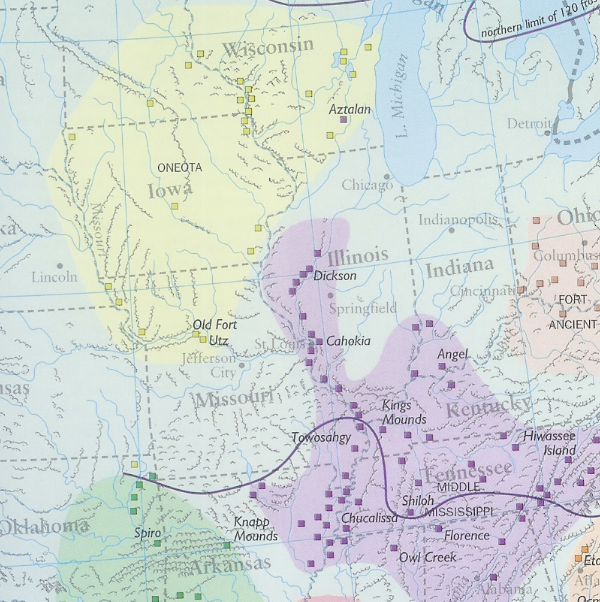The Moundbuilders' Art: A Confluence of 'Ingenuity, Industry, and Elegance'
The Moundbuilders’ Art: A Confluence of ‘Ingenuity, Industry, and Elegance’ is a digital exhibit built in Omeka that focuses on the culture and art of three moundbuilding Native American cultures, the Adena, the Fort Ancient, and the Hopewell. The site dedicates one page to each group, giving an overview of the culture and their works, specifically art forms such as pottery, and their moundbuilding. Each culture corresponds with a period of moundbuilding and has a focus on one particular mound or site as an example. This creates a timeline that walks the reader through over 2000 years of native history with specific examples not only related to the mounds but also art, culture, and also the archaeology and study of the mounds in the modern period.
The exhibit includes a good number of photographs and illustrations from each culture that can be used as sources in the classroom. Figures included are videos of scholars discussing moundbuilding, drawings and pictures of mounds and other historic sites, photos and illustrations of artifacts such as beads, combs, and pottery; and maps. The exhibit also features a page with an embedded map of mounds in the Ohio River Valley that has popups that include a name and description for each site. This map would be a good tool for students to interact with to see the location of but also how many mounds are in the region, especially as it is interactive. The timeline section, however, is broken, likely due to the age of the exhibit. Though this feature is unusable, the rest of the resources make up for this loss.
The exhibit also includes a page entitled “European Reactions to the Mounds,” which discusses the intense interest that early colonists had regarding the mounds, which continued for the following centuries. However, this section of the exhibit also emphasizes the popular and academic belief that the mounds were built by a ‘lost race’ and not by any native people. This discriminatory belief only fell away in the twentieth century, and proper recognition of the architectural achievement of the mounds finally came to different indigenous tribes. This section of the website could be important for classroom discussion related to the discriminatory practices towards native people throughout American history, from colonization to the present time, while still giving agency to natives by focusing on the architectural achievements of the mounds.
This site could be useful for both educators and students. Students could use the entire
website themselves, as the exhibit walks the student through the cultures, different time periods, and further resources in a guided manner. The amount of information and resources included in the exhibit are targeted and would likely not overwhelm a high school student. Alternatively, the site is full of resources that could be used separately, especially for younger students. The interactive map could also be featured in a classroom presentation and is user-friendly. Educators could pull certain photos, illustrations, or videos of interviews with scholars to show in the classroom. These sources could work both with the larger site or with materials from other sources to give students an idea of the breadth of mounds across North America.
